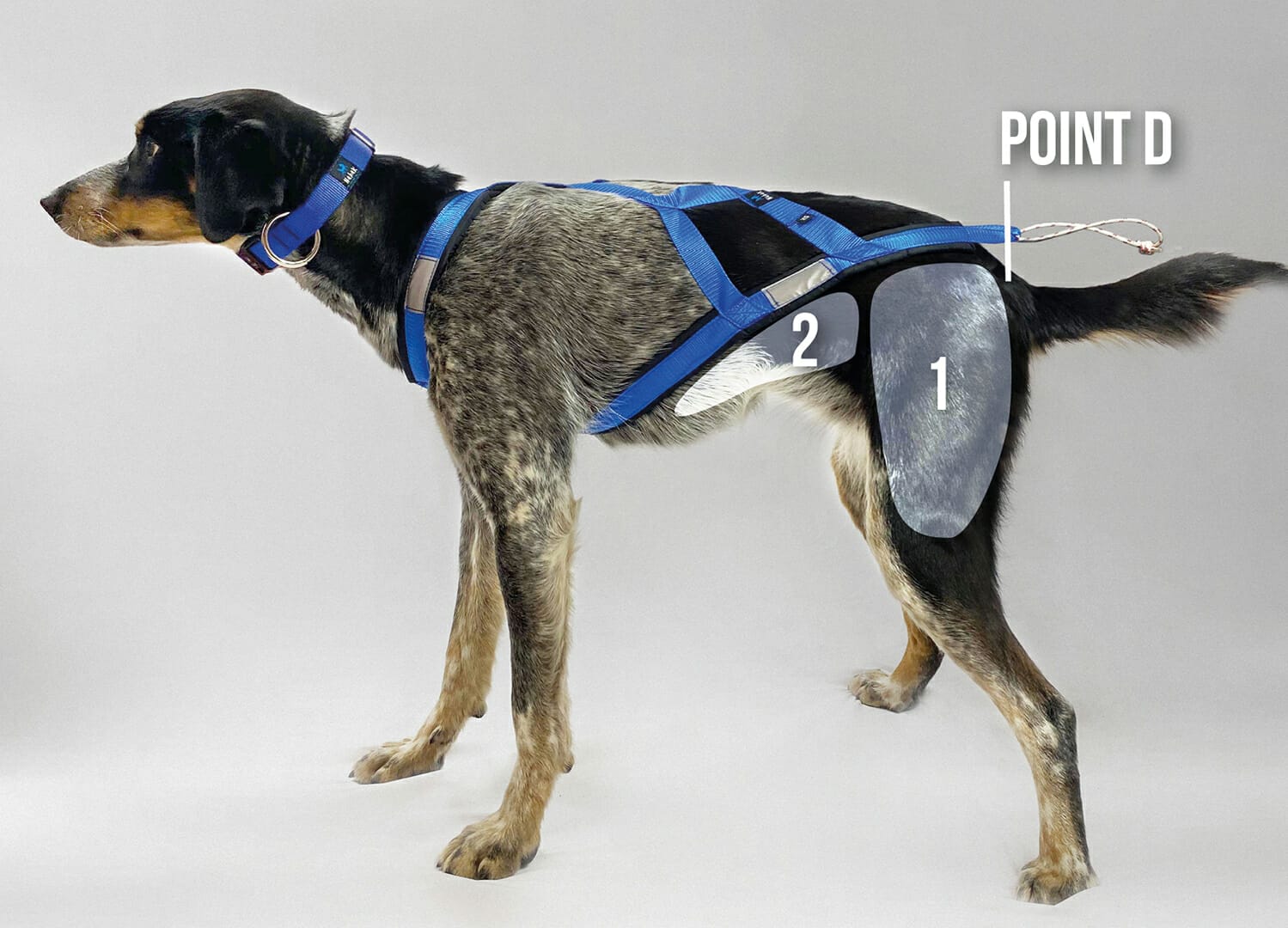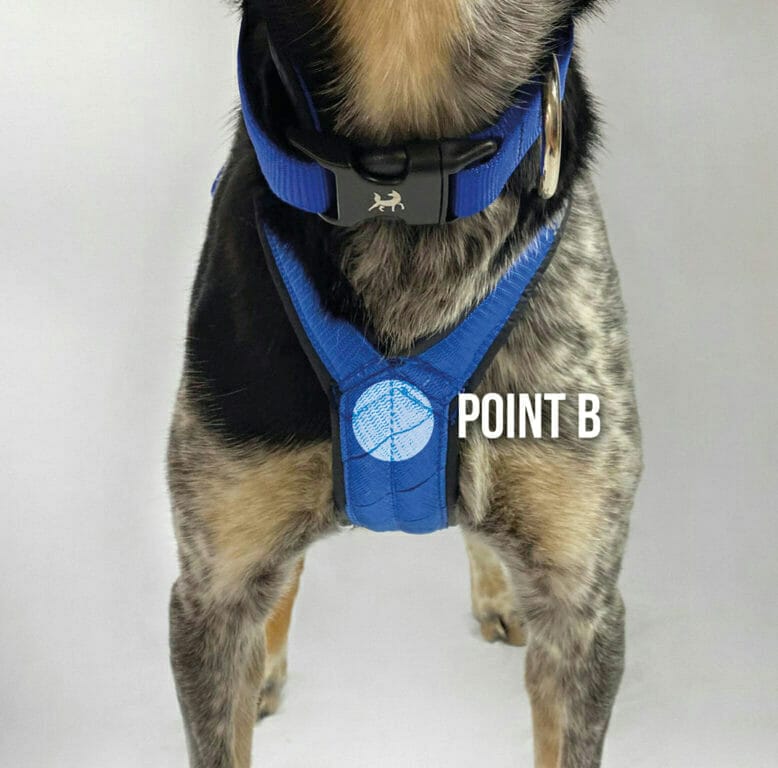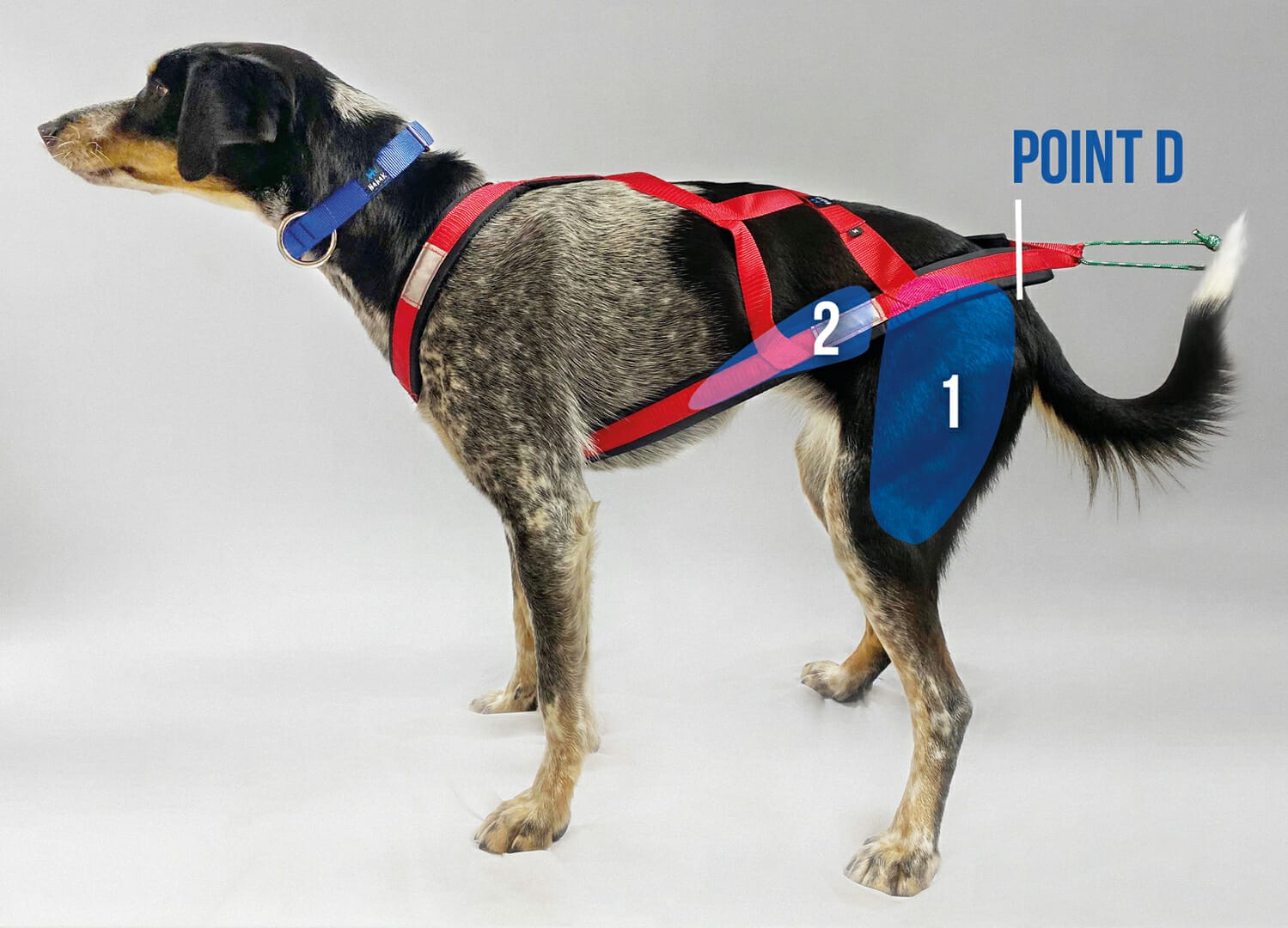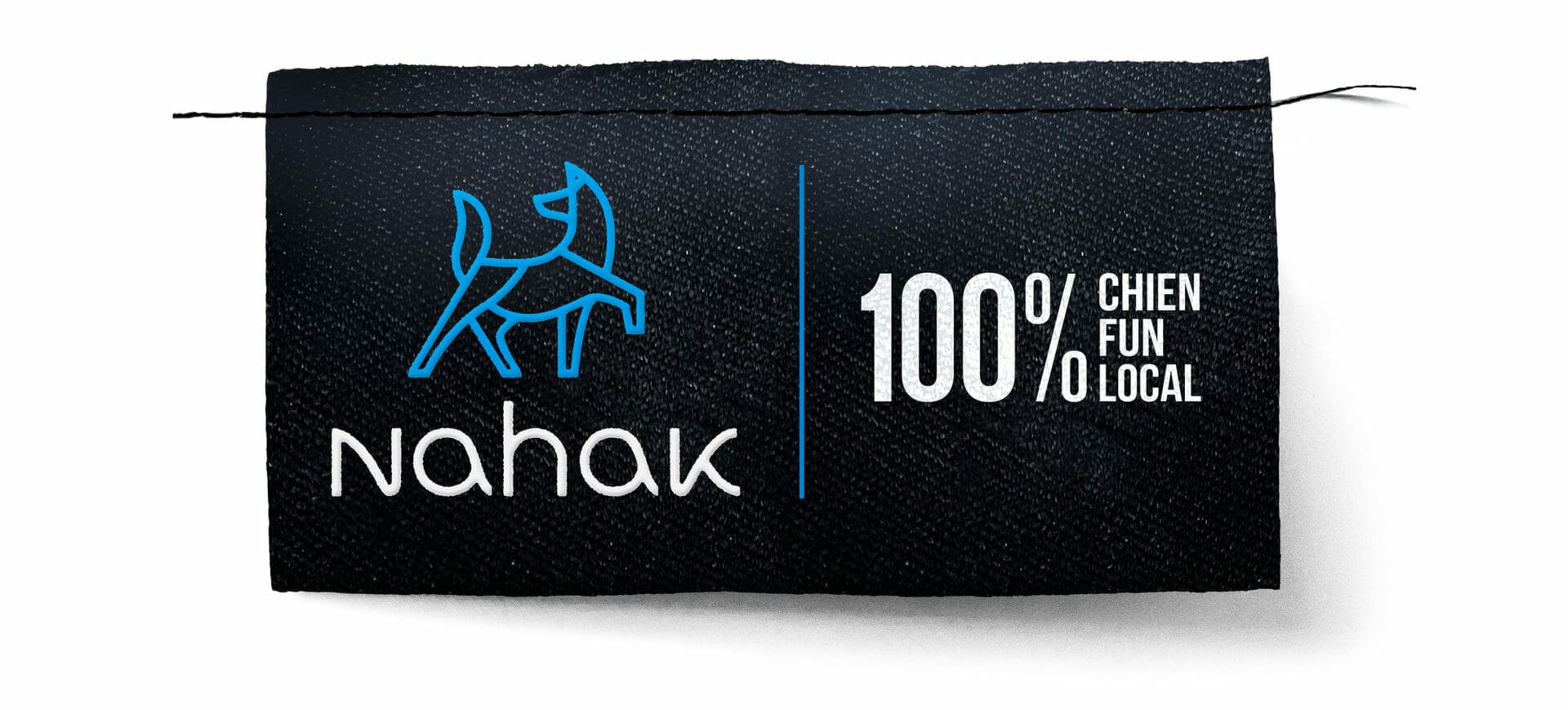
1. If there is no tension on the harness rope, it’s normal that it goes back on the back of your dog depending to its morphology.
Therefore, to ensure that the selected size is good, it is essential to pull on the harness rope to validate the adjustments.
2. If necessary, pull out the hair and the skin of the harness neck.

Good size
When pulling the harness rope horizontally, the harness strap must end at POINT D (where the dog’s tail starts).
As a result, the harness releases the thigh (1) and flanks areas (2).

In addition, the neck should be tight enough to hide the sternum bone (POINT B) et bien dégager les épaules.

Too large
In the case of a harness that is too big, the harness strap ends farther than POINT D (where the dog’s tail starts).
As a result, the harness passes over the upper thighs (1), enters the flanks (2) et n'est pas bien supporté par la cage thoracique.
Dans le cas d'un cou trop grand, l'os du sternum ressort du bas de l'encolure. Cela fait en sorte que lorsque le chien tire, la sangle qui passe autour de son cou s'écarte et crée une pression sur les épaules qui peut le blesser.
